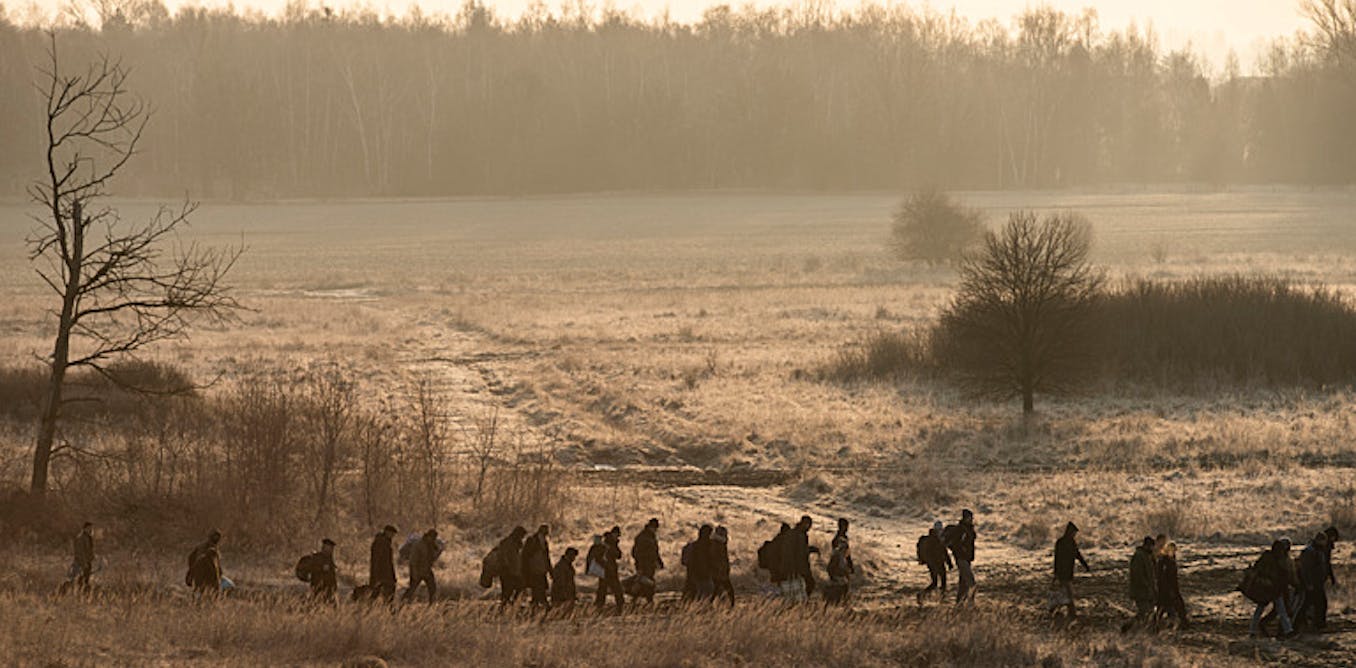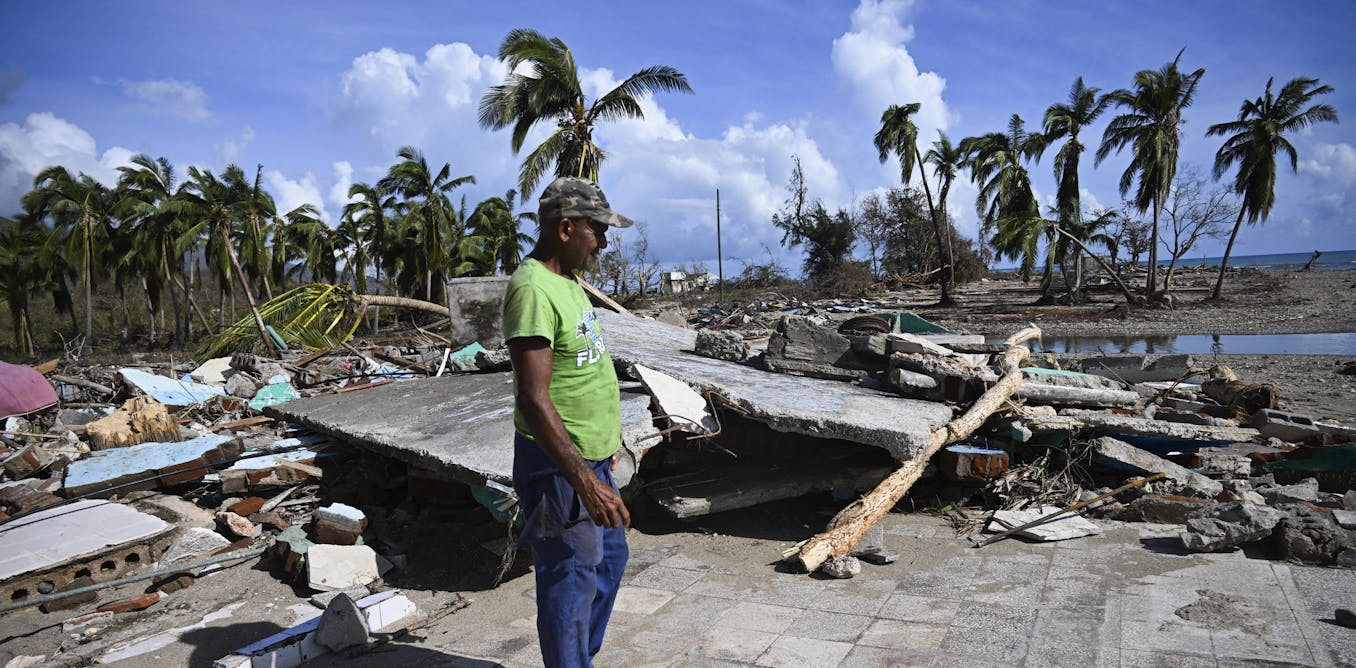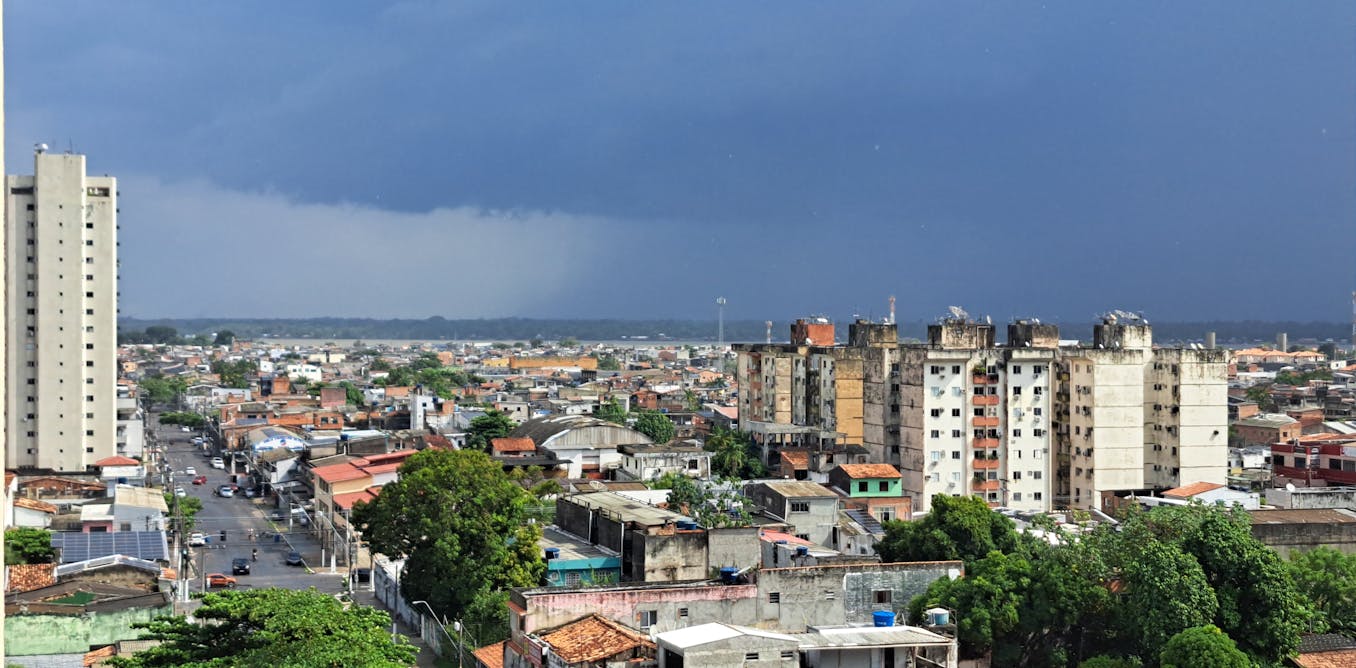In the Danish TV drama Families Like Ours, one melancholic line from high-school student Laura captures the emotional toll of climate displacement: “Soon we will vanish like bubbles in a creek.” This seven-part series imagines a near future in which Denmark is being evacuated due to rising sea levels – a government-mandated relocation of an entire population.
The series challenges the fantasy that wealthy western countries are immune to the far-reaching effects of climate change. Rather than focusing on catastrophic storylines, Families Like Ours portrays the mundane, bureaucratic and affective aspects of relocating a population in anticipation of a creeping crisis: the scramble for visas, the fractures that appear between families, and the inequalities in social and economic capital that shape people’s chances for a new life.
Yet, the idea that Denmark could soon get submerged is not grounded in science. More worryingly, the narrative of the unavoidable uninhabitability of entire nations and millions of international migrants flooding Europe is misleading, dangerous, and sidelines deeply political questions about adaptation to sea level rise that should be dealt with now.
Sea levels are rising by a few millimetres a year. That pace is accelerating. The Intergovernmental Panel on Climate Change predicts that, by 2100, sea levels could rise by up to one metre on average. Beyond 2100, sea levels could rise by several metres, although these long-term scenarios are highly uncertain.
Even in extreme scenarios, these developments would unfold over several decades and centuries. It’s unlikely that permanent submergence of large areas of land will make Denmark uninhabitable.
Still, sea level rise poses a serious risk to the livelihoods of millions of people living in coastal zones. In the UK, many homes in Norfolk and Fairbourne, Wales, are already at risk from coastal erosion, for instance.
These changes are subtle. They do not warrant the evacuation of an entire nation, but degrade coastal livelihoods over time. Houses in high-risk areas like these may become uninsurable, devalued or too risky to live in. This will force people to move.
In addition, sea level rise makes coastal flooding more likely. In European high-income countries, including Denmark, rising waters already threaten coastal communities. Without adaptation, hundreds of thousands of homes in cities such as Copenhagen could be at risk.
BBC/Zentropa Entertainments / StudioCanal / CANAL+ / TV 2/Sturla Brandth Grøvlen
The danger of mass migration narratives
However, depicting climate change as a driver of uncontrolled mass migration is misleading. Sea level rise will contribute to coastal migration, and state-led relocation is already a reality especially in Africa and Asia. But climate migration predominantly occurs within countries or regions. International migration from climate change impacts is the exception, not the norm.
To capture these complexities, some researchers prefer the term “climate mobility”. Mobility can be forced or voluntary, permanent or temporary, even seasonal. Some communities and people resist relocation plans and stay put.
Families Like Ours reinforces longstanding narratives that frame certain parts of the world as destined to become uninhabitable. Even UN Secretary-General António Guterres warned of a “mass exodus of entire populations on a biblical scale” due to sea level rise.

BBC/Zentropa Entertainments / StudioCanal / CANAL+ / TV 2/Sturla Brandth Grøvlen
As a researcher working on climate adaptation, I notice that sea level rise and climate migration are increasingly discussed at the global level. Discussions focus, for example, on the protection of affected populations and continued statehood of nations after their potential submergence. A new global alliance of cities and regions tackling sea level rise called the Ocean Rise & Coastal Resilience Coalition considers a “managed retreat” not only as inevitable but as a rational and desirable adaptation pathway for many cities and regions.

BBC/Zentropa Entertainments / StudioCanal / CANAL+ / TV 2/Manuel Claro
Scientists have warned that creative storylines highlighting the “uninhabitability” of low-lying countries and regions, such as the Pacific, are not helpful. The mass migration narrative can be used by governments to justify extreme protectionist action and sideline urgent adaptation debates.
States are not helpless in the face of sea level rise and submergence is not inevitable. As geographer Carol Farbotko and colleagues suggest, “habitability is mediated by human actions and is not a direct consequence of environmental change”. People often develop their own ways of living with rising waters, resisting narratives of submergence. State-led adaptation is possible, but depends on finance, which is unequally distributed.
People’s migration decisions can seldomly be attributed to just climate impact. A community’s capacity to respond hinges on social, political, economic and demographic factors. Adaptation measures are costly. This raises deeply political questions over who gets to be protected, who is left behind, and how managed retreat can benefit the most affected people and places in a fair way. We need to overcome mass migration myths and start a serious and justice-focused debate about the future of our shorelines.

Don’t have time to read about climate change as much as you’d like?
Get a weekly roundup in your inbox instead. Every Wednesday, The Conversation’s environment editor writes Imagine, a short email that goes a little deeper into just one climate issue. Join the 45,000+ readers who’ve subscribed so far.

The post “What Danish climate migration drama, Families Like Ours, gets wrong about rising sea levels” by Florian Steig, DPhil Student, Geography and the Environment, University of Oxford was published on 06/27/2025 by theconversation.com





































Leave a Reply